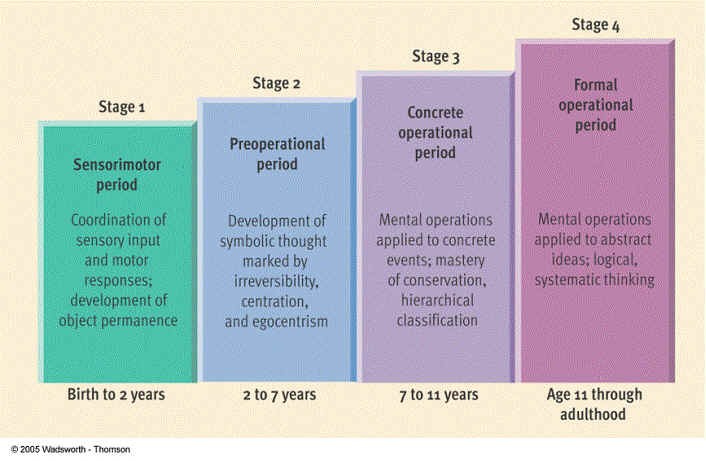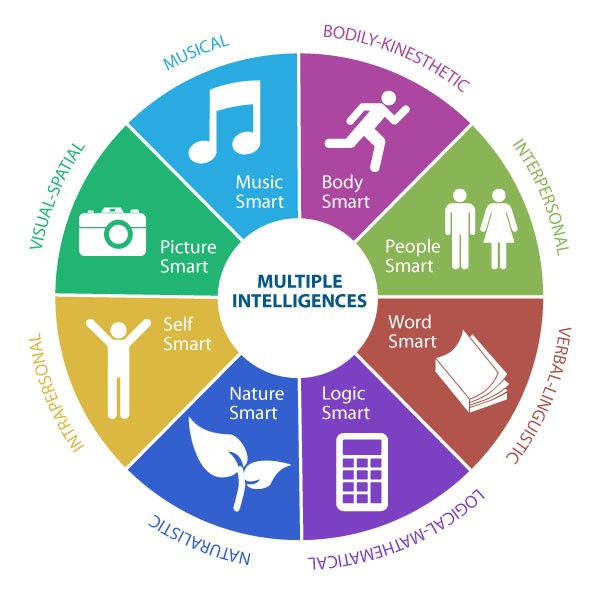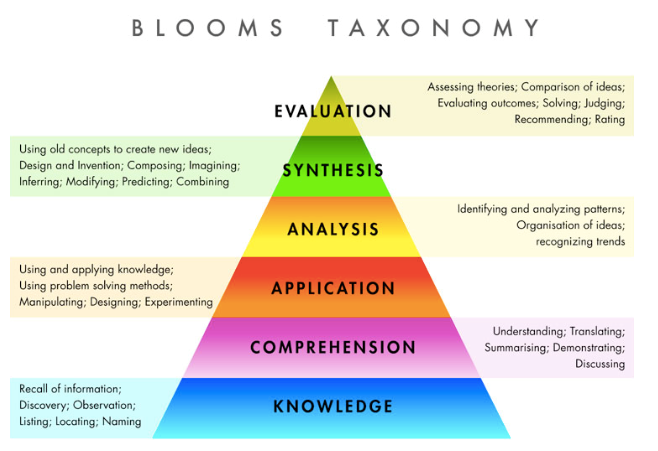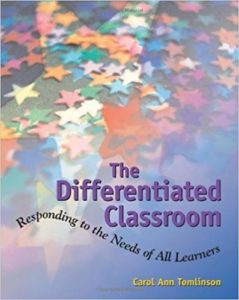9 Questions to Tackle in Demonstrating Knowledge of Your Students
9/10/2017

Magic can be seen and heard…I can prove it!
Teachers who can connect with any student, even those hard to like students, is something special. You can see them talking, hugging, high-fiving, and complementing these students. In fact, they do it so well, that the student cannot help himself or herself from showing respect back to them. What do these teachers do to create such strong relationships?
I believe we must dig deep and find out as much as we can about our student's lives. We can do it without prying into their personal lives, but I argue there may be some circumstances that we need to pry in order to keep our students safe. All this information will help us support students academically, socially, and emotionally.
Here are 9 questions you can answer to demonstrate knowledge of your students and "Rock Your Evaluation."
1 - What Do I Know About Typical Students of This Age?
Exemplary teachers understand that students of a specific age group have certain characteristics that are in common. They know their students inside and out…the proverbial statement, "how they tick." How a teacher communicates and connects with students at different age levels is an art form, much like the words from Robert Marzano's bestseller, The Arts and Science of Teaching. How these teachers connect with 5-year olds is much different from how they might with 18-year olds.
Knowing student's interests and hobbies at each age level is a great first strategy to connect with them. The ability for a teacher to discuss superheroes with a kindergarten student, or the ability to talk code with a teenager, can be tremendous strategies to start a conversation, gain trust, and earn respect. A master teacher understands that taking time to develop relationships with students pays off in the end. Much like a bank account, building up the currency in the account will make it easier when you have to withdraw. Students will see that you care to spend time learning about their likes and interests.
Understanding the adolescent brain also supports the type of conversations a teacher can have with a student. As there is no place for sarcasm in creating strong relationships, humor (appropriate that is) can be a great strategy to connect with students. Laughing together breaks down barriers and creates bonds that are reinforced by happiness. Paiget talks about these common stages of brain development that still ring true in much brain research today:

2 - What Do I Know About the Learning Process for Students of This Age?
An exemplary teacher understands the math lesson they create for a kindergarten student is drastically different from a senior taking trigonometry. Lesson development, and the learning process of these age groups, connects directly with brain development. Time of engagement usually connects with the age of the learner. For example, a 5 year old should be able to stay engaged in learning for 5 minutes. Likewise, an 18 year old should be able to retain engagement of learning for up to 18 minutes.
The use of a learning pyramid can support lesson design. The learning pyramid is backed by research and graphically illustrates that lecture is only retained at about 5%, as compared to learning where the student is teaching someone else the content, 90%. Review the learning pyramid below:

Master teachers will design lessons that include multiple types of learning and modalities. Howard Gardner's, Multiple Intelligences, is a great tool for teachers to use when planning instruction. Brain development, as well as physical and emotional development play a role in deciding what type of lesson you can design. Take time to find out what your student's strengths are using a survey designed around Howard Gardner's work. An exemplary teacher will design lessons that enhance a student's strengths in according to their modality, as well as their growth areas.

Lastly, taking into account the level of which a student must respond is important. Master teachers lead through inquiry learning in which questions drive the instruction and students construct meaning to those questions. Bloom's Taxonomy is another great tool an exemplary teacher uses when designing lessons and subsequent questions. A master teacher writes a list of questions they would ask prior to teaching the lesson, as well as being able to create questions while teaching to respond to the learners in the classroom.

Designing lessons that take into account the Learning Pyramid, Multiple Intelligences, Bloom's Taxonomy, and the student's achievement levels will support instruction that meets the student's needs. Master teachers include students in designing the learning experiences.
3 - Do My Students Have Special Needs?
 A master teacher knows the students in class, especially if there is any special needs. These teachers know the student's health needs, as well as individual education plans (IEP) comprehensively. They study the plans before school starts and connects with other school personnel to meet the student's needs immediately. Understanding an IEP can be difficult, getting the right people on board to break down the intricacies is important. Master teachers also connect with parents as soon as possible to help understand the student's in their classes.
A master teacher knows the students in class, especially if there is any special needs. These teachers know the student's health needs, as well as individual education plans (IEP) comprehensively. They study the plans before school starts and connects with other school personnel to meet the student's needs immediately. Understanding an IEP can be difficult, getting the right people on board to break down the intricacies is important. Master teachers also connect with parents as soon as possible to help understand the student's in their classes.
RELATED - Parent Participation at the IEP Team Meeting
Planning instruction for these students with special needs should take into account the idea of differentiation. Differentiation can come in the form of changing the process, product, and curriculum. The goal is meet learners where they are and take them further by giving them what they need at their readiness level. The ability to differentiate curriculum is an art. Carol Ann Tomlinson discusses the ability to differentiate for all learners in a recent book titled, The Differentiated Classroom: Responding to the Needs of All Learners.
Master teachers include students in making decisions on how they learn.
RELATED SPECIAL NEEDS READINGS -
4 - What Academic Information Do I Have Access to on My Students?
Master teachers spend time sifting through data about their students. This could mean information on an electronic file, Web 2.0 tool, or a hard copy school file. They look at achievement data from standardized tests, report cards, other formal assessments, and any informal data they might be able to access.
Exemplary teachers look for patterns with data across the grade level, classes, as well as individual students. They plan instruction according to these discovered data trends. These teachers know the content they need to teach in order to increase student achievement. They find areas of strengths where the instructional time in a specific area may be decreased, and then increased in other areas for growth.
5 - What Soft Skills and Executive Functioning Skills Do My Students Need More Development?
A master teacher understands that soft skills and executive functioning skills are just as important to the learning process as the academic content. These teachers practice soft skills and hold students accountable to explicit expectations. By doing this, these teachers know that students will become more successful with academics.
For example, a student who is unable to organize their desk and binder needs support from an adult. The teacher can repeatedly tell students what they need to do, but these teachers take it one step further. They practice how to stay organized, give examples, and do it with the student. As success is seen, they gradually pull away with support. This concept, gradual release of responsibility, is used by master teachers in all aspects of school. Master teachers do not assume that students already know how to do it.
Master teachers include the student in tracking their growth in these areas.
6 - Do I Plan Curriculum, Instruction, or Assessment for a Diverse Set of Learners According to the Grade Level (or Classroom) Achievement Data?
Master teachers understand that the state and school district expect the teacher to cover certain content at each successive grade level. These teachers also know that their classroom has a vast difference in learning styles and academic levels. Like mentioned above, the ability to differentiate curriculum is vital to meeting all the needs of the students.
Curriculum changes can support a learner. The reading level of the curriculum may be too difficult for some students to access. The exemplary teacher plans for this and find resources that covers the same content at a lower reading and comprehension level. Likewise, the teacher may have some students that are far beyond the curriculum with their understanding. These students will need resources that are more complex.
Instruction can be changed to meet learner needs. Master teachers change instructional strategies to meet the needs of the learners by changing the delivery of the content, as well as adding in more sensory experiences. These teachers may change the delivery in the middle of the lesson; they are masterful at taking what the students are giving them and adapting. This only comes from being a student of your students!
Assessment data gives you an understanding of two things: 1) how well you taught the content, and 2) how well your students comprehended the content. Every piece of data gives you a picture into your student's academic life. The more pictures taken, the more you understand your students. Over assessing may give you false data, taking into account the effectiveness of your lessons will give you adequate information on how often you should be assessing. A good rule of thumb is a formative assessment in the middle of the lesson and at the end. In this fashion, master teachers will understand if students are comprehending the content, and if not, the teacher can change instructional strategies. In addition, a formal assessment at the end of the lesson is great data into the effectiveness of your lesson.
Master teachers include the students in making these decisions.
7 - What Are My Student's Interests?
Finding out a student's interests can arguably be a time waster to some teachers. Exemplary teachers use interest inventories and surveys to not only find out more about their students, but they also plan instruction around these interests. Don't we as adults like to learn more about topics we are interested in…heck, yes! We need to be taking this information into account when we design our curriculum, instruction, and assessment.
Teachers usually give interest surveys at the beginning of the year. Master teachers study this information, make connections, and look for patterns they can include in their lesson planning. They find unique and creative ways to include these interests into lesson design on a daily basis, and they even include the students in deciding how they will learn.
8 - What Are the Cultural Backgrounds of My Students?
Master teachers study the demographics of their students. They know the cultural heritage's of the students in their classroom. They plan learning for all students that include traditions, history, and other cultural experiences. These teachers take time to learn more about the diverse learners in their classroom by talking with parents, elders, reading, researching, and more.
Teachers understand breaking down barriers and teaching tolerance, empathy, and kindness starts with them. They encourage students to learn more about each other and the ability to see situations from someone else's shoes. These teachers are constantly looking for all types of bias in the curriculum they teach. They make sure that any bias curriculum is changed, edited, or updated to culturally acceptable and responsive content.
Using food, song, guest speakers, oral stories, books, games, and other resources are fantastic supports for students to further their learning of other cultures. Master teachers encourage and invite students and families to take part in the learning experiences, as well as offering their expertize.
9 - How Can I Tailor the Instruction to Meet Individual Needs from All the Information I Gather?
The multitude of information you can gather on your students can be overwhelming. Start small with a few inclusive pieces of information, like differentiating one piece of a lesson. By looking at assessment data, you can break your students into three groups: 1) below grade level, 2) on grade level, and 3) above grade level. Then design your lesson so that each of these three groups can access the content, and even extend it for the above grade level learners. Most lessons only take into account on grade level learners. Start with one subject area, and then expand.
Another place to start after using an interest inventory it to create learning that takes into account various learning styles associated with Howard Gardner's work as mentioned above. For example, a 5th grade social studies lesson on explorers could include these assessment ideas: 1) produce a pirate video, 2) role play a Native American encounter by explorers, 3) create a model ship, or 4) write a poem that depicts an explorer's first experiences in America. This assessment takes into account students' different learning styles, student choice, as well as differentiating the assessment portion of the lesson…a true three for one! A fourth way to differentiate this lesson would be to create different levels of requirements to meet below, on, and above grade level students.
Before you know it, you are creating learning experiences that take into account multiple data points.
(Charlotte Danielson Model: Domain 1 Component b)
MORE ROCK MY EVALUATION RELATED READINGS:
- Demonstrating Knowledge of Content and Pedagogy
- Demonstrating Knowledge of Your Students (Currently here)
- Setting Instructional Outcomes
- Demonstrating Knowledge of Resources
- Designing Coherent Instruction
- Designing Student Assessments
- Learning How to Say No and Set Boundaries with Parents - November 21, 2022
- If You Had Only One Behavior Strategy to Use in Your Classroom, What Would It Be? - September 26, 2022
- Live Your Code: 7 Strategies That Will Help You Be the Most Effective Educator You Can Be - August 15, 2022









